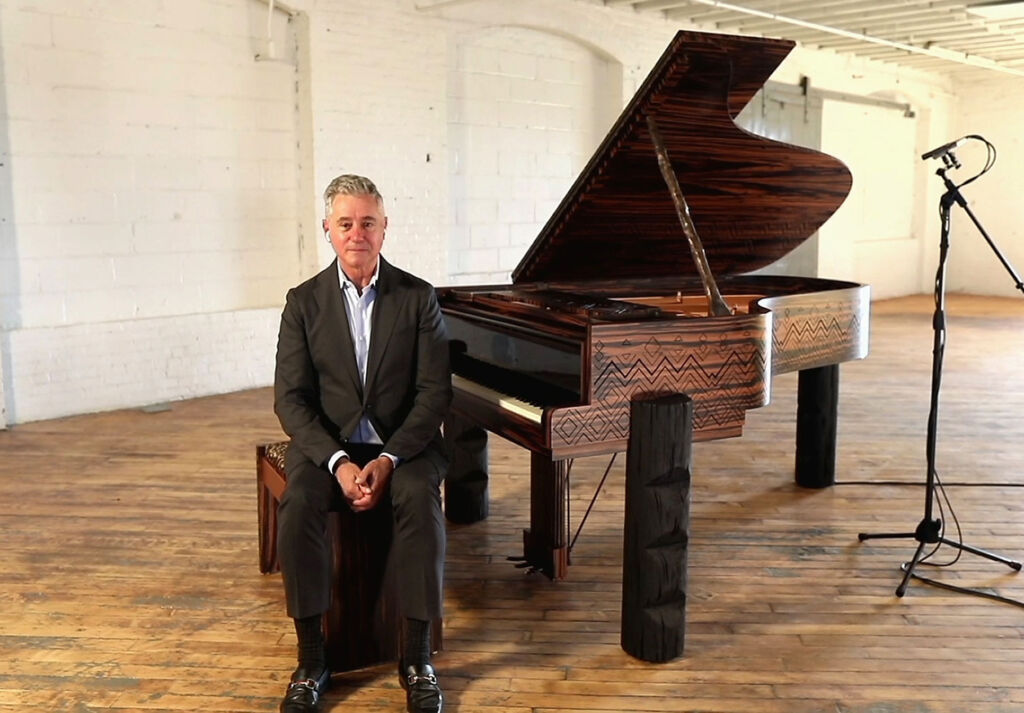
In an exclusive interview with Steinway & Sons President and CEO Ron Losby, Simon Wittenberg discusses Steinway’s collaboration with the American singer-songwriter, Lenny Kravitz, to create the limited edition “Kravitz Grand” piano.
Luxurious Magazine: With a long heritage dating back to 1853, there have been many collaborations in the past, with names such as Lang Lang and Karl Lagerfeld. What are the shared values which brought Steinway & Sons and Lenny Kravitz together to create ten limited edition Model B pianos?
Ron Losby: To start, it was important to us that Lenny is both a musician and a designer. In regard to both fields, he aims for the best and, as the builder of the world’s finest pianos, it is something we have in common. This duality is also what made working with Lenny such a pleasure.
His design instincts paired wonderfully with our artisans who enjoyed the challenges he presented, like the hand carving and the block-style piano legs. As a musician, you can tell he respects the instrument musically as well, and that’s something very important to Steinway because each of our pianos is a work of art that should be appreciated.
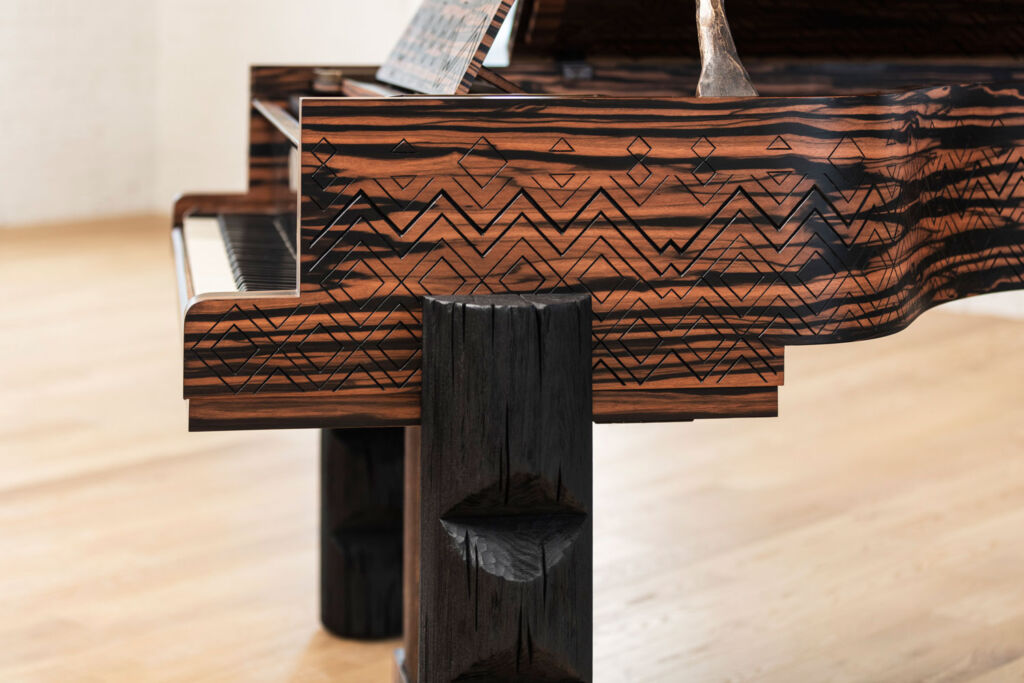
LM: What are the key features of the Kravitz Grand that makes it so unique?
Ron: The Kravitz Grand has many unique features. One that comes to mind is the 15 layers of hard rock maple and rare Macassar ebony personally selected by Lenny Kravitz for the exterior. Another is the hand-carved motifs on the piano rim, the inner lid, and music desk that required over 200 hours of carving by Steinway artisans.
One stunning design element is the solid bronze castings for the top stick and pedal lyre, the latter weighing more than 40 pounds, envisioned by Kravitz Design and cast by Modern Art Foundry.
A finishing touch was the Steinway and Spirio logos inlaid in faux tortoise by Pearl Works.
LM: What is the unique look inspired by?
Ron: The Kravitz Grand is inspired by the African themes utilised in paintings, sculpture and fabric design from the Paris art scene of the 1920s. When the piano was in its conception phase, Lenny was also re-designing his Paris home for a second time, which incorporated a lot of the same artistic details.
He wanted to design a piano that would fit perfectly into his Paris home, and it resulted in this incredible work of art and craftsmanship. At the recent piano launch, Lenny mentioned he wanted the piano to sit in his entrance, and I think that’s a brilliant idea because a piano like this really commands your attention.
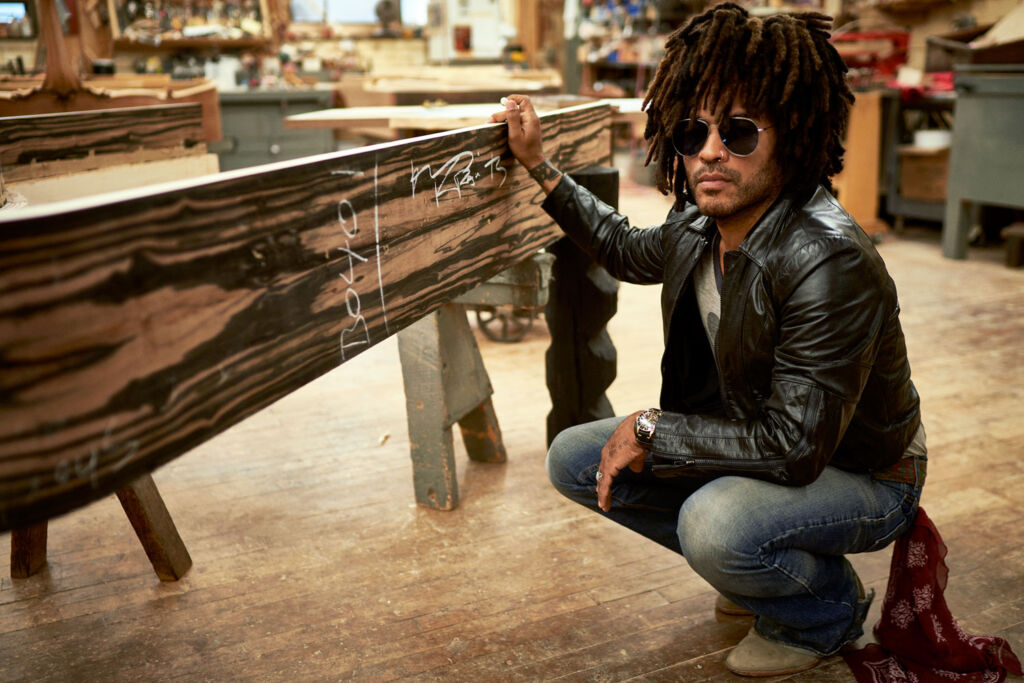
LM: How much input did Lenny Kravitz have between concept and production?
Ron: Lenny was there for every step, from concept and production to the recent unveiling.
His dedication to design and appreciation for craftsmanship really shone through during this partnership, especially when he visited the Steinway factory in Queens, New York, and spoke to the company artisans.
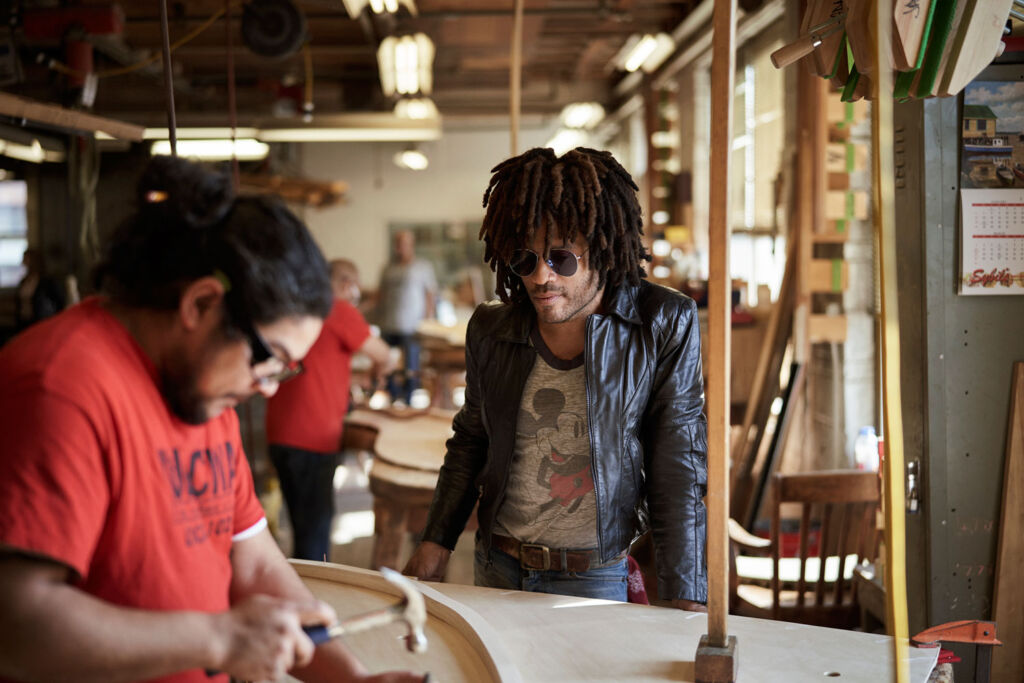
While Lenny came prepared with ideas, he took the time to get to know each artisan’s speciality and fully understand what they could bring to the table. In turn, the artisans wanted to help him realise his vision for the Kravitz Grand, which resulted in a truly collaborative partnership and a piano, unlike anything we’ve done before.
LM: How long does each Grand Kravitz take to build from start to finish?
Ron: Well, the hand-carved motifs on the piano rim, the inner lid, and music desk require over 200 hours of carving by Steinway artisans alone! Even a standard ebony Steinway grand takes about 11 months from start to finish, and due to the additional elaborate elements, building a Kravitz Grand takes well over a year.
It is safe to say that each Kravitz Grand is a labour of love and a true representation of craftsmanship in its highest form. It’s really incredible when you think of the number of skilled hands that have lovingly put each Kravitz Grand together.
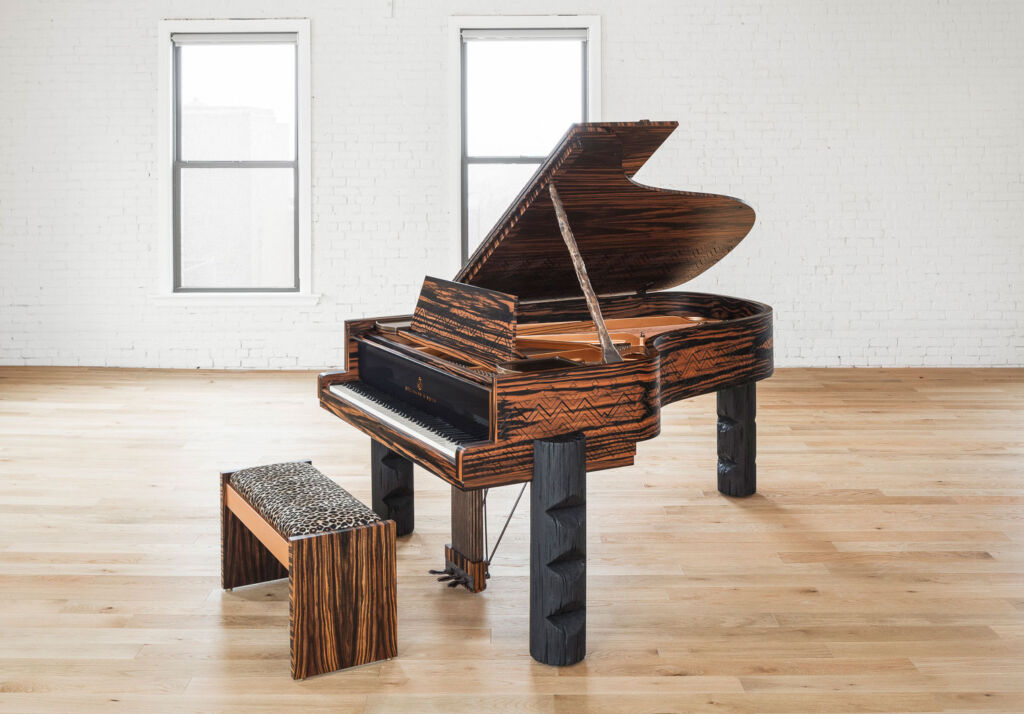
LM: How many of the limited edition pianos have been sold, as we understand that they retail at $500,000 each? Were some of them available as a pre-order?
Ron: The first Kravitz Grand was purchased just days after we announced it. We are currently building more, but they are months away from completion. Based on the amount of interest we have seen, we have no doubt that these additional pianos will sell quickly upon their completion. I can confirm that each Kravitz Grand does retail for $500,000, and interested buyers can contact us directly via the Steinway website.
LM: The Kravitz Grand will also be sold in Europe. What are your target market and customer profile?
Ron: That’s right, the Kravitz Grand will also be available in Europe, and in fact, the two Kravitz Grands currently nearing completion in the factory are slated for delivery to Europe upon their completion. The target market and customer profile for this piano is someone with a deep appreciation for design, craftsmanship and rarity, but also for music.
The Kravitz Grand is a piece of art, but it is a musical instrument at its heart, and it needs to be played. The great thing about the Kravitz Grand is that it is also a Steinway Spirio (our high-resolution player piano controlled by an iPad). So even if the buyer isn’t a pianist, the piano can be “played” by some of the greatest pianists of our time. The ideal buyer is someone who recognises what a truly special piano this is, but will also enjoy the music it produces.
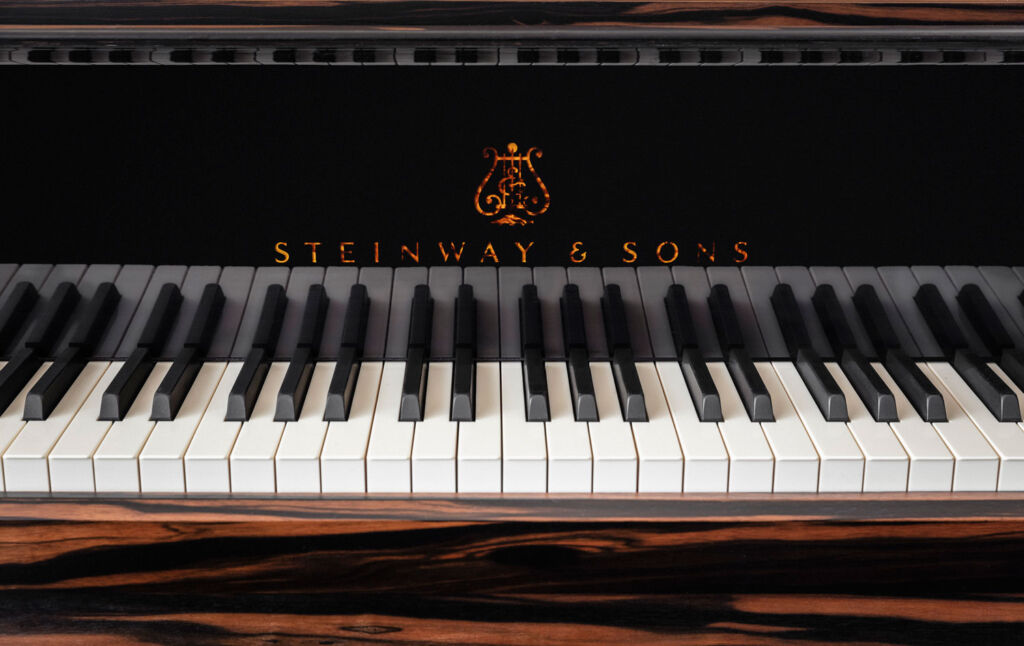
LM: When making pianos, how much focus is placed on sustainability when materials, such as wood, are chosen, so as to make sure that they are responsibly sourced?
Ron: Lenny is environmentally minded, and so are we at Steinway & Sons. Our pianos are crafted with different kinds of woods to ensure a variety of factors like strength and stability.
Our factory ensures that all wood received is within Steinway’s rigorous specifications, and we source our lumber from long-time partners that practice responsible forestry – replanting and replenishing this vital resource.
In addition to a program of Continuous Improvement to find ways to maximise the efficiency of every process within our factory, Steinway & Sons is a benefactor to the Hardwood Forestry Fund, whose purpose is to promote hardwood timber growth, management, education, and environmentally sound uses of our forest resources.
LM: What have been your highlights since joining Steinway & Sons in 2016?
Ron: 2016 is when I assumed the role of CEO, but I’ve actually been with Steinway & Sons much longer than that! I first joined the company in 1987 and was President of the Americas region from 2008 to 2016, before taking over the role of global CEO.
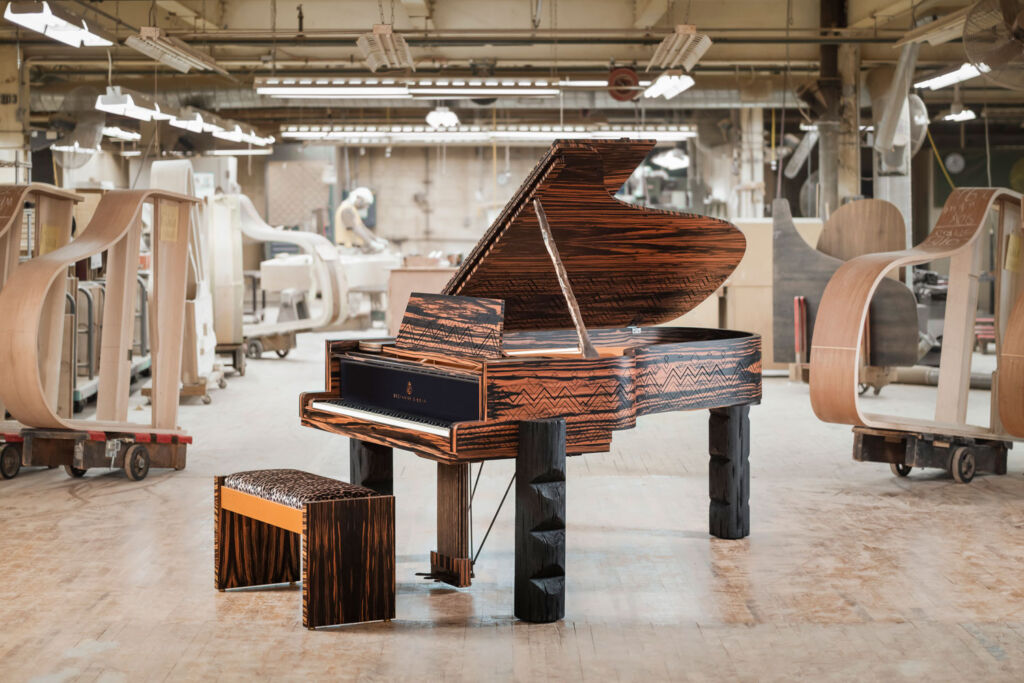
The Kravitz Grand is certainly one of the highlights in my 33 years with the brand! In addition to working on and launching the Kravitz Grand, I’d have to say opening the Steinway Vault is another highlight in my career.
The Vault is an invite-only space within our Queens, New York factory, and it is home to the rarest Steinways ever built. One example is the Onyx Duet, a Steinway with a dual personality featuring an all-ebony finish on the exterior and Macassar Ebony on the underside of the lid and inner rim.
Another key highlight for me was the introduction of Steinway Spirio, our high-resolution player piano – because this great new product has opened up the beautiful music of a Steinway to a much wider potential audience.
LM: Have you always been interested in music, and what were your key drivers for joining Steinway?
Ron: I was drawn to the piano as a child and was very lucky that my family owned a Steinway, so I have been very aware of the beautiful music they produce and the power of the brand for almost my entire life.
I attended The Juilliard School and the San Francisco Conservatory of Music (two long-time partners that own literally hundreds of Steinways) with the goal of being a professional musician. I wanted to be the next Vladimir Horowitz!
While I was in school, I began selling pianos to make ends meet. I soon realised that making a living by playing the piano was a lot more difficult than doing so by selling pianos.
Also, as much as I loved playing the piano, having a job in the industry allowed me to continue playing and also to sell a product that I love so much. I think when you’re selling something that you truly believe in and love, you are set up for success. So, I believe that set me on the right path in the piano industry, and ultimately at Steinway & Sons.
LM: How would you define luxury, and what are your personal luxuries in life?
Ron: I believe luxury is something different for everyone, though I think one key ingredient in creating a luxurious product or experience is time. Whether it’s a top-notch meal prepared by a world-renowned chef, a fine wine that spends time ageing to perfection, or a Steinway that takes almost a full year to build, the commonality is the time invested (and skill).
As for my personal luxuries, there are a few, but I think the things I just mentioned – a fantastic meal, with a superb glass of wine, while listening to a world-class pianist on a Steinway… now that’s luxury to me!
LM: Thank you for your time Ron, and it has been a pleasure talking to you.
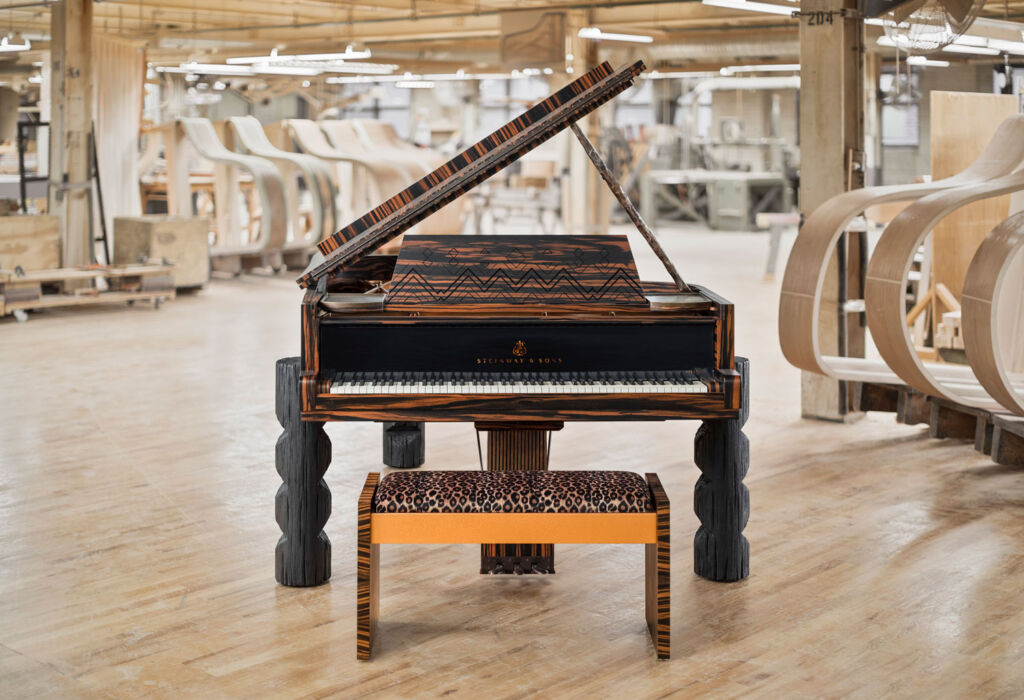
Steinway & Sons and Lenny Kravitz – Where and How?
For more information on Steinway & Sons, visit www.steinway.com.
For more information about Kravitz Design, visit www.kravitzdesign.com.
For more information on the Steinway & Sons Kravitz Grand, visit www.steinway.com/kravitzgrand.
Photo credits: Mark Seliger and Steinway & Sons.
![]()

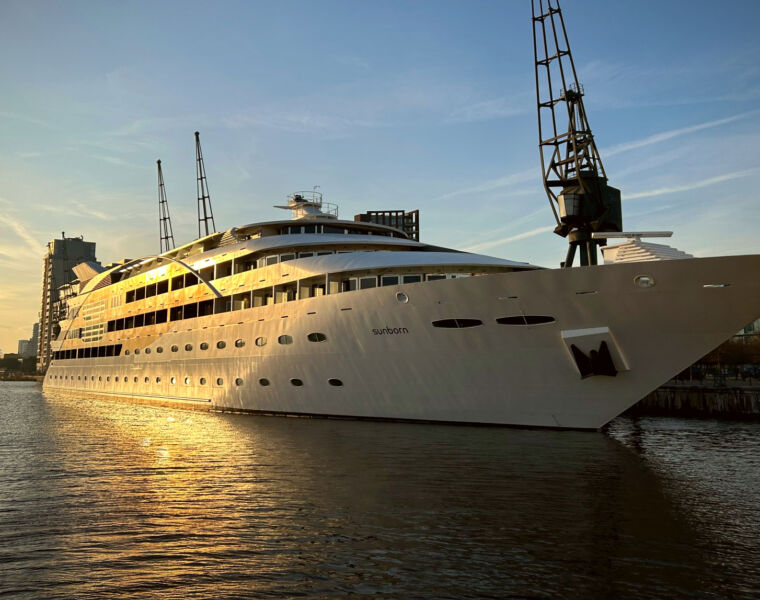


You must be logged in to post a comment.